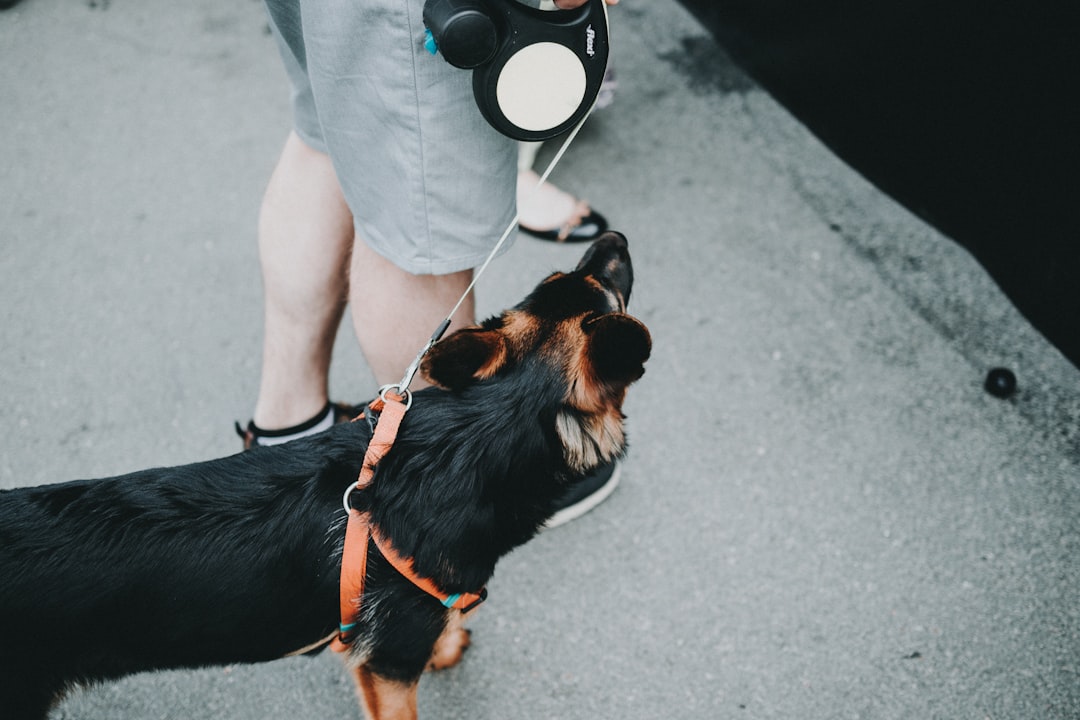Ever wondered how to turn your puppy’s woofs into wags despite their pesky infections? Enter Clavacillin for Dogs, the marvel of modern veterinary medicine! This magical little pill can make a world of difference for your furry friend. But before you play pharmacist to Fido, let’s dive into the nitty-gritty of its uses, dosage tips, and some cheeky precautions. After all, nobody wants to turn a simple treatment into a canine comedy of errors! So, grab a treat for your pup and let’s get started on the bark-ology of Clavacillin!
Overview of Clavacillin and Its Purpose in Veterinary Medicine

Clavacillin for Dogs—sounds like a superhero, right? Well, somewhat! This charming little antibiotic combo saves furry friends from the evil clutches of bacterial infections. It’s like a tiny knight, armed and ready to wage war on the “bad guys.”
What is Clavacillin?
Clavacillin combines amoxicillin (the trusty steed) and clavulanic acid (the clever sidekick). Together, they form a team to fend off bacteria and prevent them from creating a fortress of resistance. Because let’s face it, no doggo deserves the annoyance of a stubborn infection!
Here are some key points about Clavacillin for Dogs:
- Purpose: Treats a variety of infections, including respiratory, urinary, and skin infections.
- Effectiveness: It broadens the antibiotic attack, giving those nasty little bacteria less time to think of a plan.
So whenever you hear about Clavacillin for Dogs, you can rest assured that a world of fluffy cuddles awaits, free from infections!
Common Uses of Clavacillin in Canine Treatment

Clavacillin for Dogs is akin to that trusty sidekick in a superhero movie—always ready to swoop in and save the day! This wonder drug primarily tackles bacterial infections, making it a go-to choice for veterinarians. Here’s what Clavacillin does best:
- Wound Infections: Like when your pup decides to wrestle a cactus. Yes, dogs have quirky tastes in playmates!
- Skin Infections: Because nobody likes a rash Ranger in the pack.
- Respiratory Infections: When Fido sounds like a honking goose, it’s time to call in the cavalry—yep, you guessed it, Clavacillin for Dogs!
- Urinary Tract Infections: Because nobody wants to find puddles in unexpected places.
In short, if your pooch gets into trouble with pesky bacteria, Clavacillin for Dogs often comes to the rescue! Remember, it’s vet-approved, so when in doubt, consult your furry friend’s healthcare provider. They’ll help you navigate when Clavacillin might be the hero your dog needs!
Recommended Dosage Guidelines for Dogs

When it comes to Clavacillin for Dogs, determining the correct dosage is as crucial as teaching your dog not to chase its own tail. Now, before you enter panic mode, let’s break it down!
- Weight Matters: Just like us humans, canine dosages depend on weight. Generally, the recommended dose is:
- Small Dogs (under 10 lbs): 62.5 mg
- Medium Dogs (10-25 lbs): 125 mg
- Large Dogs (over 25 lbs): 250 mg
- Frequency is Key: Most veterinarians prescribe it to be given twice a day. Simple enough, right?
- Timing: Try to administer it at the same times daily. Your pup will thank you later (and might even perform a happy dance)!
- Duration: Follow your vet’s timeline. Usually, treatments last between 7-14 days. But don’t play the doctor; stick to the plan!
Keep in mind, always consult your vet for the specific needs of your canine companion because no two pups are the same. Getting the dosage right means keeping tails wagging and avoiding the dreaded “oops, I gave you too much” moment!
Administration Methods for Clavacillin for Dogs
Administering Clavacillin for Dogs doesn’t have to feel like a wrestling match—unless you really enjoy that. Here’s how to make it easier for both you and your furry companion:
- Pill Popping: If your pooch is up for it, give them a direct pill with a treat (who can resist a tasty morsel?).
- Skinny Dipping: For the more vocal dogs who might turn into drama queens when they see a pill, try a little peanut butter or cream cheese. Just make sure you don’t mistake their treat for your own breakfast spread!
- Liquid Gold: For those who prefer their medication in liquid form, Clavacillin is available as a suspension. Use a syringe (but not the one meant for your smoothies) to squirt it into their mouth.
Pro Tips:
- Timing is everything! Administer Clavacillin for Dogs at the same time each day to maintain consistent levels in their system.
- Stay positive and give lots of belly rubs! Remember, it’s all about the “good dog vibes.”
Following these methods helps ensure your furry friend gets their dosage without the theatrics. After all, nobody wants a drama puppy when it comes to their health!
Potential Side Effects and Reactions in Dogs
When it comes to Clavacillin for Dogs, knowing what could go wrong is as essential as knowing what could go right. So, buckle up because we’re about to take a ride through the possible side effects!
Common Side Effects:
- Digestive Drama: Some dogs might experience a bit of an upset stomach. Think of it as their way of saying, “Hey, I’m not just a pretty face!”
- Allergic Reactions: If your dog suddenly turns into a sneezing machine (and not the cute kind), it could be an allergic reaction. Keep an eye out for itching, swelling, or hives.
- Drowsiness: More napping than usual? Your furry friend might just be enjoying a Clavacillin-induced slumber party.
What to Watch For:
- Don’t panic if your pup displays slight lethargy. But, if they play the role of a couch potato for too long, it might be time to call the vet.
- Always check with your vet if you notice anything bizarre after administering Clavacillin for Dogs. Remember, better safe than sorry!
So, keep those peepers peeled, and let the doggo adventure continue!
Precautions to Take When Using Clavacillin for Dogs
Using Clavacillin for Dogs can feel like a walk in the park—until it’s not! To keep things fun and safe, here are the important precautions to watch for:
- Allergies, Anyone? Make sure to check if your furry friend is allergic to penicillin. If their reaction is anything like your buddy who can’t take a hint, steer clear!
- Pre-existing Conditions: If your dog’s more ‘vintage’ than a classic car, ensure to inform your vet about any kidney issues or liver diseases. Old pups need extra TLC (and sometimes extra meds).
- Current Medications: Just like that time you tried mixing pineapple on pizza—it didn’t end well! If your pup takes other medications, let the vet know to avoid any medicational mash-ups.
- Pregnant Paws: If your dog is expecting a litter, double-check with your vet. Some medications aren’t baby-friendly!
In conclusion, while Clavacillin for Dogs can be a lifesaver, a good bit of caution goes a long way. Your dog’s health is priceless, and with these tips, you’ll keep your furry sidekick safe and sound!
Consulting Your Veterinarian: When and Why It Matters
So you’ve heard about Clavacillin for Dogs and you’re excited to play Dr. Doolittle, huh? Hold your horses! 🐴 While it’s tempting to jump straight into doggy pharmacology, consulting your veterinarian is crucial. Here’s why:
- Professional Insight: Your vet has a degree—unlike YouTube’s “Doggone Tips.” They can explain if Clavacillin for Dogs is the right choice for your pooch’s specific ailment.
- Dosing Dilemmas: Getting the dosage right can be trickier than teaching your pup to fetch. A vet ensures you get the correct amount based on your dog’s weight and health.
- Potential Interactions: Just like your dog avoids your neighbor’s squirrel, your vet avoids possible medication interactions. They’ll check what other meds your furry friend takes.
- Health History Review: Every dog is unique! Your vet’s knowledge of your dog’s medical history allows them to tailor treatment effectively.
Consulting your veterinarian before giving Clavacillin for Dogs ensures your four-legged family member receives the best possible care and avoids any unnecessary risks. After all, a happy dog equals a happy owner—woof on that! 🐶✨
Consulting Your Veterinarian: When and Why It Matters
When it comes to Clavacillin for Dogs, think of your veterinarian as the wise sage of the pet world. Sure, you might consider yourself a canine healthcare guru after reading a few blogs (like this one, wink wink), but nothing beats the tailored advice from your furry friend’s medical magician.
Here’s why consulting your vet is as critical as a dog chasing its tail:
- Personalized Insights: Every pup is unique. Your vet understands your dog’s specific needs way better than Google ever could!
- Correct Dosage: Using Clavacillin for Dogs? Make sure your vet calculates the right amount. You wouldn’t want Fido overdosing on his favorite pill, thinking it’s a treat!
- Monitoring Side Effects: Ever heard of doggy drama? Your vet helps keep the melodrama at bay by actively monitoring for any concerning side effects.
So, before you whip out the meds and play doctor, remember: professional guidance is your best buddy. Keep those tail wags and slobbery kisses coming by consulting your vet! 🐾
Frequently Asked Questions
What exactly is Clavacillin and why would I want to give it to my dog?
Ah, Clavacillin! The knight in shining armor for our furry companions! This delightful concoction is a medication that combines amoxicillin and clavulanate, perfect for kicking bacterial infections to the curb. Picture it as your dog’s super-strength multitasker, battling everything from skin infections to dental disasters. Of course, before you unleash this superhero on your pup, it’s best to have a chat with your vet – they know the secret sauce to keep your fluffy friend healthy!
How much Clavacillin should I give my dog without turning them into a mini Hulk?
Ah, the age-old question of dosage. You definitely don’t want your pooch transforming into Hulk: Ultra-Paw Edition. The appropriate dose of Clavacillin typically depends on your dog’s weight and condition. As a rough guideline, it’s usually about 12.5 to 25 mg per kilogram of body weight every 12 to 24 hours. But remember, no two dogs are created alike! Always consult your vet for that perfect dose to keep your pet healthy and happy without them becoming the incredible hulk!
What are some precautions I should take before giving my dog Clavacillin?
Ah, precautions! The spice of life (and medicine). Before you dive into the Clavacillin pool, make sure your dog isn’t allergic to penicillin or has liver issues – otherwise, you might create a medical soap opera! Also, avoid giving it to pooches with specific health conditions without a vet’s blessing. Keep an eye out for any side effects like stomach upset or – gasp – allergic reactions. If your dog starts channeling their inner drama queen, contact your vet quicker than a squirrel at the park!
Can I give my dog Clavacillin if they’re already on another medication?
Oh, the tangled web of medications! Mixing meds is like throwing a party with the cranky cat next door – it could lead to a ruckus! Always consult your veterinarian before combining Clavacillin with other medications. They’ll ensure that your dog’s meds won’t clash like uninvited guests at a party, potentially causing side effects or diminishing the effectiveness of either. So before your pup’s meds start mingling, get that vet advice to keep the peace!



